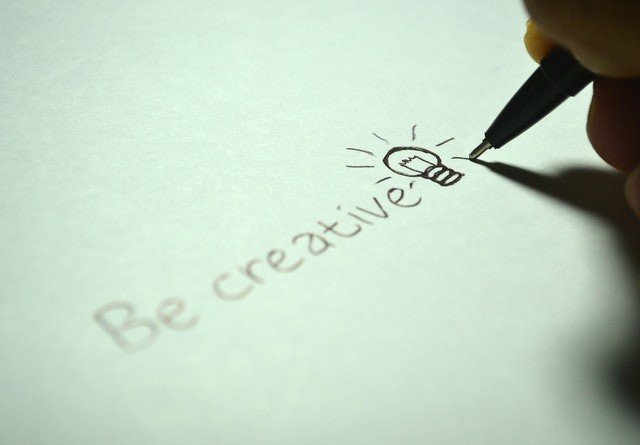Paper even today is an inseparable part of our life. Though in the last two decades, the very essence of paper has been threatened. Digitisation of money and payment, e-books, e-newspapers, digital receipts and so on. One by one paper is slowly disappearing from our lives. Environmentalists might get happy since it is going to save the trees in the long run. But for artists, holding a piece of paper to create art is part of our soul.
What is paper?
By definition it is thin sheet produced from any material by laying the fibres evenly. The fibres can be made from cloth or wood or even plastic. First the material is evenly mixed with water and then water is allowed to drain away leaving the fibres on the mesh wire leaving it out to dry. Today most of the ancient process has been replaced by machines.
Recycled paper is becoming popular these days too. But the chemicals used in mixing and dyeing the pulp might add to the already environmental woes by the paper industry.
Much of the paper consumed was used by the newspaper industry, with many governments subsidising the supply of paper to the printings presses. But thanks to the digital revolution many people especially in the urban setting do not buy a physical copy of the newspaper opting for the digital version instead.
History of paper
Prior to the advent of real paper, the stem of papyrus plant was the most commonly used option in the ancient world. The sticky and inner fibrous part of the stem is removed and laid out to dry, flattened and stuck together to form paper. Many of these papyrus scrolls have survived due to the hot and dry climate in regions like Egypt. But in humid places like England such scrolls have long been destroyed due to moulds.
The oldest documented scroll till date is “The diary of Merer” which was written over 4500 years ago by an official who was recording transportation of limestone blocks from the quarry to Giza by boats. The final use of the blocks is not recorded though. These scrolls were discovered during an excavation in 2013 of man-made caves to store boats on the Red Sea coast.
With hundreds of such documents hidden away, they keep surfacing every now and then in that region. For example, a 16 meter long scroll was recently discovered in 2021 probably dating 50 BCE. It contains funeral texts from one of the caskets at Sqqara, Egypt. It has been dubbed as the “Book of the dead” and also has been named as the Waziri Papyrus after the archeologist who has discovered it.
Papyrus ruled the scene till the Chinese discovered paper.
Although there are several options before papyrus like animal skin parchments, even the parchment was not considered to be truly a piece of paper. Paintings and writings were even done on cloth, wood boards, leaves, etc.
Creation of paper by Cai Lun
It can never be found out who the first creator of paper was. Archeological finding keep throwing up new and new instances of paper discovery by earlier inventors. So lets just say that Cai Lun was the first one who perfected the art and process of making paper. In the year 105 he publicly announced that he had invented a new process of paper making.
Earlier Chinese had experimented with making paper and writing on different surfaces. All these solutions were heavy to store and carry and most of the thin surfaces were impractical. Besides the most important point was the cost. All earlier processes were prohibitively expensive. But it was Cai who perfected the process of mixing hemp and tree bark to bamboo boiled into a pulp. This kind of paper was also called Cai Hou Paper.
Paper made from this process was fast and inexpensive. This lead to the mass production of paper and spread all across the world.
Modern times
Making paper today is a fairly fast and automated process. It begins with pulp making either by chemical or mechanical process. Mechanical process costs much less than chemicals but the paper produced is yellow in colour and rather less lasting since it is brittle. The pulp is then fed to a paper machine which forms the paper web as well as removes water. Next step is drying which is done by either air or heat. Finally the paper is send to finishing to make it suitable for various applications. Coating of paper involves adding material like china clay. In the end, rollers also create the final texture or grains as desired including water marking.
How is paper used
Paper use has changed over a period of time. Before the industrial revolution, most of the paper was made by hand or by manual machines. This paper was primarily consumed to make books, newspapers and currency. Office and school stationary was the next biggest usage. Other purposes like wrapping, packing and storing formed the next main usage.
The digital revolution however has brought dramatic changes in the use of paper. Many corporates now use totally paper free offices running entirely on computers and networks. Large volume books like the Britannica Encyclopedia are no longer printed. First printed in 1768, it is the longest running and printing publication till 2010 which was the last printed edition. Newspapers who were the major consumers of paper have moved to digital copies which reach their readers as soon as they are ready.
The other major consumers of paper are the Govt Mints who print currency. Paper currency which has no alternative till date is now being replaced by digital wallets and digital currency. That leaves just two users finally left with paper, one is the schools and colleges which still pretty much use pen and paper and the second is we artists who just cannot do away with paper despite the onslaught of tablets and digital pens. Can you think of one more use of paper which isn’t going to go away from our lives in the near future? Of course it is toilet paper!


